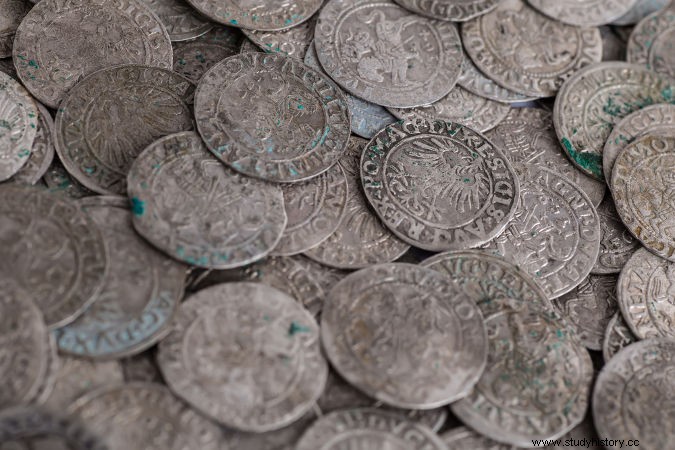
TheCommercial Renaissance of the Middle Ages occurred because of the expansion of trade routes and the establishment of annual fairs, which attracted numerous traders interested in selling and exchanging products. A consequence of this phenomenon was the return of the use of currency .
The commercial renaissance is directly linked to the urban renaissance. The renaissance of commerce is attributed to population growth and the increase in agricultural production, which provided a surplus that could be marketed.
The development of cities from the 11th century onwards generated a need for goods, which was only met through commerce. With this demand, traders began to establish themselves in certain European cities. In addition, many merchants became sedentary, for overland trade routes in Europe were very precarious and unsafe. Despite this process of sedentarization, European trade depended mainly on sea routes, which were considered cheaper than land routes.
Mediterranean and Nordic trade
With the growth of maritime routes, two major trade axes were established in Europe:the Mediterranean axis , dominated by the Italian cities of Venice and Genoa, and the Nordic axis, known as League Hanseatic .
Venice and Genoa's impetus is attributed to the fact that their agricultural production was small. Thus, in the 11th century, these cities supported the beginning of the Crusades, with the interest of obtaining luxury goods existing in the eastern market, which had been closed since the Muslim conquest. They were also known for encouraging the Fourth Crusade, with the aim of expanding their business into the lands of the Byzantine Empire.
The Hanseatic League dominated the market in northern Europe. It was formed by a group of Germanic cities that allied and managed to exercise control over the market in regions ranging from Eastern Europe to Iceland. Regarding the Hanseatic route, Hilário Franco Júnior states that:
the Hanseatics collected in one place and sold in another furs, honey and wax from Russia, wheat and wood from Poland and Prussia, minerals from Hungary, fish from Norway and Iceland, copper and iron from Sweden, wine from southern Germany, salt from France and Portugal, wool from England and cloth from Flanders 1 .
The two trade axes met at the fairs held in Champagne , region of present-day France. These fairs developed from the end of the twelfth century in “Lagny, in Bar-sur-Aube, in Provins and in Troyes” 2 (small towns and cities that were in the Champagne region) and were held once a year, in cycles that lasted a few months. The development of the fairs is attributed to the attitude of the counts of the region, who were more liberal and often exempted traders from toll charges – one of the obstacles to the itinerant land trade.
Commercial development has brought the currency back into use. This impulse started from Genoa, which began to mint coins from 1252, followed by France, in 1266, and Florence, in 1284. However, the large amount of coins existing in Europe made it difficult for the greater circulation of money.
From the end of the 13th century, mainly, the most successful merchants established trading houses , starting to exercise a very large control over part of the commercial flow and, often, over the cities in which they were installed. An example is the merchants of the German city of Cologne, who managed to establish a trading house on the banks of the River Thames in London in 1130 3 .
This impulse resulted in the development of a new social class:the bourgeoisie . As he got richer, the power of the bourgeoisie, coming from their fortunes, began to be confused with the power of the nobility, especially in the cities.
___________________________________
1
FRANCO JUNIOR, Hilary. The Middle Ages, the birth of the West. São Paulo:Brasiliense, 2006, p.41.
2
LE GOFF, Jacques. The medieval roots of Europe. Petrópolis:Vozes, 2011, p. 163.
3
Idem , P. 169.
by Daniel Neves
Graduate in History
Take the opportunity to check out our video lesson related to the subject:
